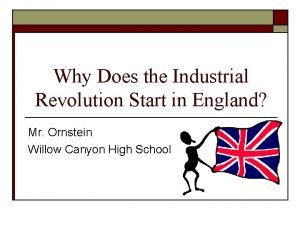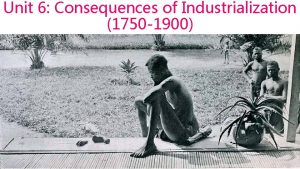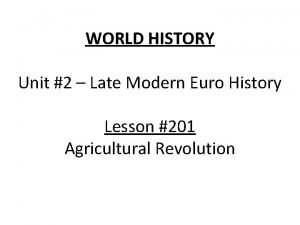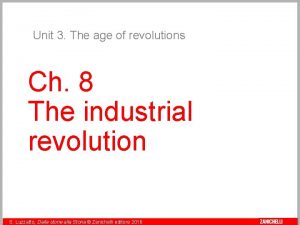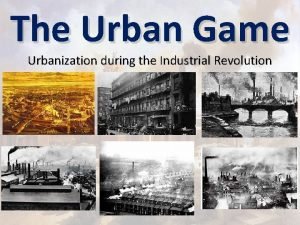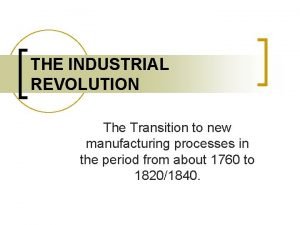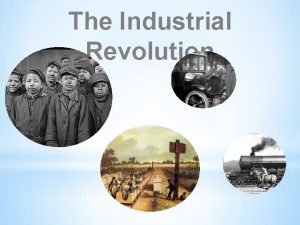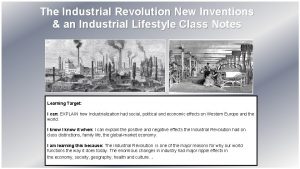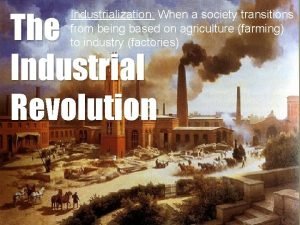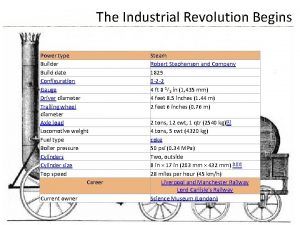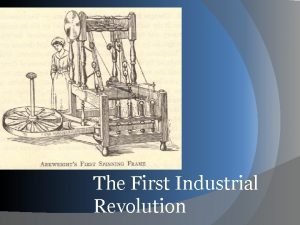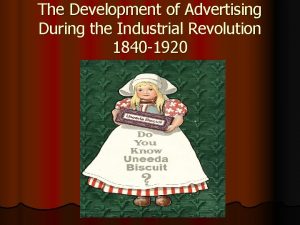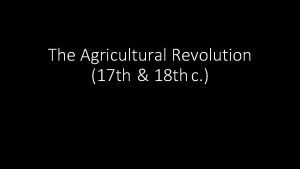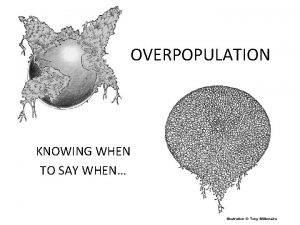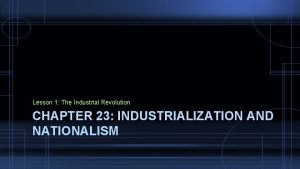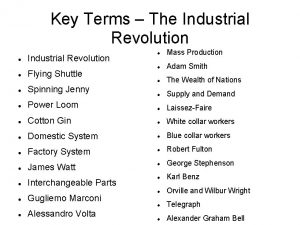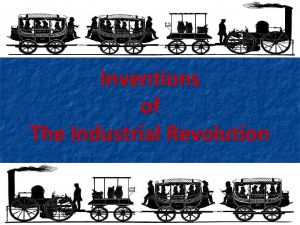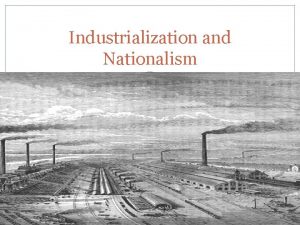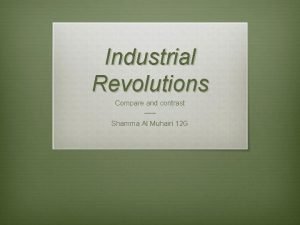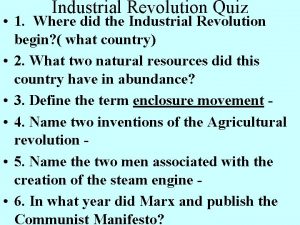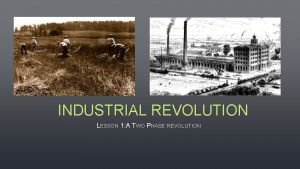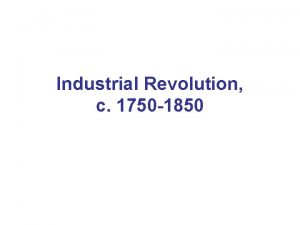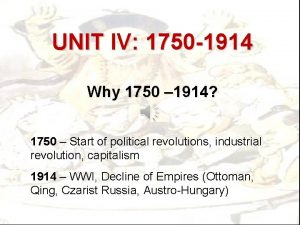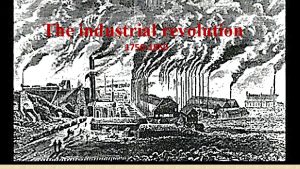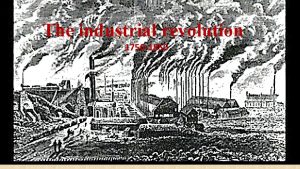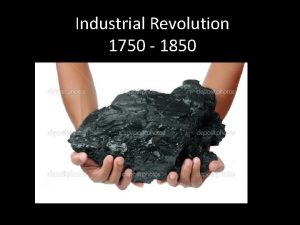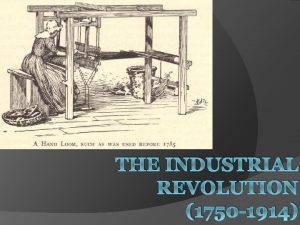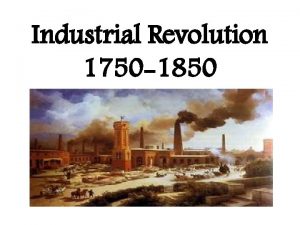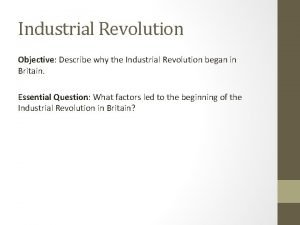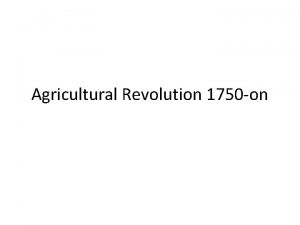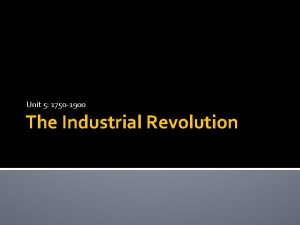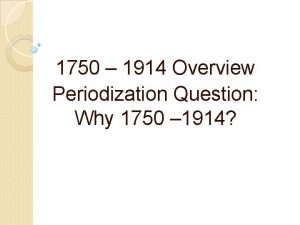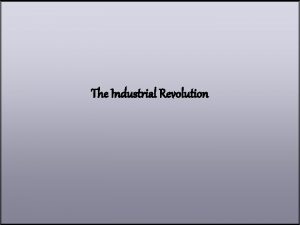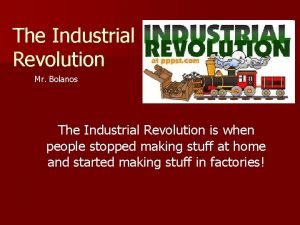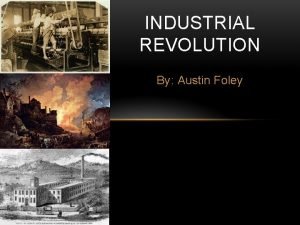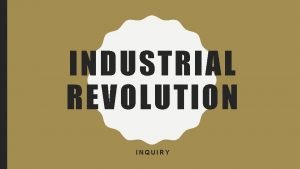Unit 5 Getafive Review Why 1750 Industrial Revolution





































- Slides: 37

Unit 5 Getafive Review

• Why 1750? – Industrial Revolution – European Imperialism – Revolutions – based on Enlightenment principles • Why 1900? – Cut off before World War I – (Used to be 1914 (WWI))

• Big Picture snapshots of this time period –Top events of this time period are Industrial Revolution, Imperialism and Revolutions • Remember I, I and R –Must know specifics includes: • Opium War, Meiji Restoration, Simon Bolivar, Haitian Revolution and the Scramble for Africa –All examples of imperialism –The West dominates this time period

• Industrial Revolution – Causes, political, economic and social effects – First is England > Western Europe > America > Russia (kinda) > Japan (Meiji) – 2 Industrial Revolutions • 1 st- Coal, iron and steam • 2 nd- Electricity, steel, oil and chemicals • Imperialism – Scramble for Africa – British in India


• Chinese and Japanese reactions differ as a result of European imperialism – China falls to Europeans – Japan has state-sponsored industrialization, becomes a major world trader • Enlightenment thought leads to Revolution/End of slave trade – American, French, Haitian and Latin America • Economic theories develop – Capitalism (Adam Smith) vs. Communism (Karl Marx)

• Major Changes – Spain and Portugal lose their empires while the Ottoman Empire becomes the “sick man of Europe” – Technologies develop in the fields of communication (telegraph), transportation (railroads) – Serf/Slave systems come to an end (Russia and America in the 1860’s) – Revolutions and independence movements (Haiti) – Major migrations to North and South America • Work, gold rushes, famine in home country • Major Comparisons – State sponsored industrialization of Japan, Russia and Egypt – Reactions of China and Japan to European imperialism – Qing and Ottomans resist change • Continuities – Majority of the world still rural – The strong control the weak • Economic Imperialism – Mercantilism, colonization, coerced labor

• Industrial Revolution, Part 1 – Video 2 • • Greatest change in world history since the Neolithic Revolution • Effects felt in the following areas: – Family life – factories (dad at work, not on the farm) – Communication – Transportation – Trains, steam ships – Technology, environment, growth of cities, populations – Social classes – proletariat/bourgeoisie – Science, art. • Leads to: – Imperialism, war, migration, political philosophies (capitalism/communism)

• Industrial Revolution in Great Britain – Why was Great Britain the first? • Natural resources (coal) • Stable government (that stays out of economy) • Government involvement in the economy can halt experimental attitude • Leads to entrepreneurial competition • Growing population • New foods, crop rotation, chemical fertilizers leads to big population growth • Compare to when China got champa rice from Vietnam

• • • Geography Metals, coal, rivers for steam power Cities grow – everyone in one place, diffusion of ideas Enclosure Acts – peasants moved off of formerly public land (fencing in) First time Great Britain has power in history By 1900, 90% of most populated cities in Europe/US James Watt and his steam engine Textile industry first Spinning Jenny (makes thread) Cotton Gin (deseeds cotton) India becomes a place for cotton to be harvested and a market to sell cotton for England Transportation impacted (steamboat, locomotive)

• 1 st Industrial Revolution was steam, coal and iron (1750 CE) • Interchangeable parts – Leads to mass production – Makes it easier • Transportation – Steamships • Allow for Europeans to go up the rivers into central Africa – Steam Locomotive – Transcontinental railroads in US and Russia • Moves from coal and steam to oil in Second IR

• 2 nd Industrial Revolution was oil, electricity, chemicals and steel (1850 CE) • Spread of Industrial Revolution from Great Britain to western Europe, America, Russia and Japan – US and Russia both build transcontinental railroads – US most powerful industrial nation at the end of this time period • Copied British industrialization • Government becomes pro-industry • Industrial North beats Agricultural South in Civil War

• • Industrial Revolution, Part 2 – Video 3 State sponsored Industrialization Japan: Meiji Restoration – Embarrassed by US, Perry – Silk factories – Women workers • Egypt: Muhammed Ali – European advisors – Cotton industry • Russia: Sergei Witte and the transcontinental railroad – Slower industrialization – Shown in Russo-Japanese War (Japan wins, shocks world)


• Other regions in the world become suppliers of goods and raw materials for the industrialized – Latin America (sugar, coffee, bananas, meat) • Argentina has a lot of beef • Guano (bat poop) fertilizer from Peru – Africa (palm oil, rubber, diamonds) • Palm oil – lubricant for machines – China – silk, porcelain, tea • Leads to imbalance of trade (all British silver going to China)

• Result of Industrial Revolution • Financial (stock market, gold standard) – International standardized prices of gold • Transnational businesses (United Fruit company) – US owns land in Central America – sells fruit back to us (BANANA REPUBLIC_ • Social Effects (gap between rich and poor dramatically increases, family life altered, child labor, less kids than rural areas, cities become crowded and unsanitary) – Women as homemakers and factory workers – Bad conditions in Japanese silk factories for women – New Social Classes – Industrial working class (conflict between workers and owners (Marxism)) – Social status more determined by wealth than by family background • Unions, reforms, and mandatory schooling is initiated – Higher wages – Leisure time (theater, sports) – Weekends

• Philosophies • Adam Smith and Capitalism (Wealth of Nations 1776) – Government stays out of economy – Lassiez faire – hands off • Karl Marx and Communism (Communist Manifesto 1848) – Workers will react and overthrow the bourgeoisie – Classless, stateless society – Government, and everything else is a way for the rich to keep the poor down – Luddites – protested industry, smashed equipment, hanged by government • Feminism (Wollstonecraft, Stanton and Seneca Falls Convention) – Wollstonecraft – equal education is key to equal rights – De Gouges – French Revolution left out women – Seneca Falls – US convention for equal rights, suffrage • Social Reforms – Universal compulsory education • Environment – Pollution

• Transportation and communication developments – Steamships and railroads – Telegraph to telephone – Canals (Suez) • Connects Africa to Asia • Easier for Europe to get to Asia and East Africa – Panama (1910 ish) • Advances in medicine like smallpox vaccines and sterilization made for longer life expectancy in industrialized world – Lower infant mortality rate


• Nationalism becomes a strong force • Pride in your country (not a leader) • Started by Napoleon (pride of being French) – Caused the people he conquered to become nationalist against him • Napoleon, unification of Italy and Germany all contributed to intense pride – Nationalism is a big impact on unification

• Germany’s nationalism is going to lead to WWI • France’s imperialism is going to lead to WWI • US Manifest Destiny – nationalism saying that US should be coast to coast • Austrian, Russian and Ottoman empires all very culturally diverse – Ottoman Empire loses some areas due to nationalism – Greece, parts of Russia – Keeps shrinking • Egypt – – Muhammad Ali – father of Modern Egypt Suez Canal Modeled after Britain and France try to control Suez Canal, eventually nationalism makes Egypt take it back

• Imperialism, Part 1 – Video 4 • • British empire largest empire of all time – “The sun never sets on the British empire” • Causes of imperialism • Search for raw materials and markets from the Industrial Revolution – India, England is example – Palm oil from Africa for machines – Rubber from Africa for tires • Nationalism and competition • Social Darwinism – Survival of the Fittest applied to races – some races are better than others and will industrialize – White Man’s Burden – poem saying it is the burden of the Europeans to civilize the barbarians – Superior attitude of European race

• • Imperialism in India the crown jewel of British empire Pattern of centralization followed by decentralization Turn over from Mughals to British – After Seven Years’ War/French and Indian War – British East India Company takes over trading in India • Need for pepper, spices leads British there • Sepoy Rebellion (1857) a reaction to British imperialism in India – rumor of pig/cow fat – Leads to the takeover of British government into India – Indians failed because Hindus/Muslims couldn’t get a long • British occupied the highest position in Indian society • Brought railway and telegraph lines to India – good for India, but put in place to maintain power • English official language (today, India has the 2 nd most English speakers in the world) • Eventually an educated class of Indians start the Indian National Congress (1885) to rid India of British control – Western learning becomes a constant for independence movements – Haiti, India, Africa, Mexico, South America

• Imperialism in China • China was amassing silver in exchange for their goods of silk, porcelain and especially tea – Didn’t want non-Chinese stuff • Qing Dynasty controls trade (only opens one port) • Britain tried to reverse this imbalance of trade by selling opium to China which caused the Opium war – Used steamships to enter China through India – Indians grew the Opium under British rule – Emperor writes letter to Queen Victoria to stop opium imports – Opium war was lost by China which resulted in unequal treaties and China being divided into spheres of influence by Europeans (places where they could trade)


• More China – Example of economic imperialism – Took control of Hong Kong (keeps it until 1997) – Vietnam lost to French (French Indochina) • Spread of Christianity • Western tech massacres China (gunships through canals) • Major repercussion of them not industrializing

• Chinese Reaction to Imperialism • White Lotus Rebellion (Buddhist rebellion over taxes) • Taiping rebellion – Almost took down Qing Dynasty – Most deaths in a war to-date (20 Million) • Self-Strengthening Movement – try to reform, modernize, industrialize, education – Too little too late (like Tanzimat Reforms) • Boxer Rebellion – Killing outsiders, Japanese, Europeans – Rad boxers who could punch bullets out of the sky – Took 5 countries to stop them

• Eventually foreign intervention will bring about the end of the Qing dynasty in 1911 – Foot binding banned – Civil service exam banished – Corruption – Tax evasion – Will lead to the republic taking over and ending 4000 years of dynastic rule

• Revolutions – Video 5 • • Enlightenment thought led to revolutions and the eventual elimination of slavery – Voltaire, Rousseau, Locke and Montesquieu – Natural Rights (life, liberty and property) – job of the government is to protect these rights – American Revolution (elites still in power) – inspired other revolutions • Revolutions are in the name of the poor, but the elites keep power

• French Revolution – Declaration of Rights of Man and Citizen similar to Declaration Independence – Both did not give women rights – King Louis XVI is executed – Much bloodier revolution than American – Reign of Terror – Robespierre killing dissentors (1000 s dead) – Led to rise of Napoleon – leads to French nationalism and nationalism of enemies – Latin American countries used Napoleon’s drama in Europe as a time to start revolutions – Napoleonic code

• Haitian Revolution – Led by Toussaint L’Ouverture – overthrew the French – Inspired by enlightenment thinkers (L’Ouveture read owner’s books) – Only successful slave revolt in the history of the world – First revolution in Latin America – 1804: a free republic with a constitution was established – French loss in Haiti led to the sale of Louisiana Purchase

• Latin American Independence (Spain and Portugal lose their empires) • Napoleon causing trouble in Spain and Portugal, leads to revolutions in colonies • Social pyramid consisted of peninsulares at the top, then creoles, mestizos, mulattoes, indigenous and finally slaves • Latin American Revolutions replaced the peninsulares with the creoles • Elites remain in power • Women gain no rights

• Simon Bolivar (The Liberator) – Educated on enlightened ideas – Used military to free Gran Columbia (Columbia, Ecuador and Venezuela) from Spanish rule – Saw himself as the George Washington of South America – Jamaica Letter – justifies independence from Spanish (like Declaration of Independence) • Jose San Martin (Creole liberator of southern South America) – Followed Bolivar’s example

• Pedro II – King fled from Portugal to Brazil – Son, declared Brazilian independence from Portugal – Makes Brazil more stable than other Latin countries, gets a Republic • Mexican independence from Spanish in 1821 – Father Hidalgo – El Grito de Delores – Landowning elites follow him to get Spanish out • All Latin Independence movements are more about independence than freedom – Elites keep power, poor still poor – Economies remain dependent on Europe – Export economies

• • Migrations – Video 6 Reasons for migrations: high population regions (China, India, Japan) to less populated regions • Work is offered in less population areas • Revolutions, persecutions, famine (Irish potato), need for agricultural workers after elimination of slavery (Sugar plantations in Caribbean), gold rushes (Australia and Alaska) • Seasonal workers – Italians in Argentina, Japanese in Pacific • Jews are persecuted • Travel is much easier (steam ships) • Slavery ending leads to need for low-paid workers • Gold rushes in Russia, California

• Italians in Argentina and Japanese in the Pacific • Effects of migrations: – America as a melting pot, Chinese culture in Southeast Asia, North and South America, Italian culture in Argentina – Chinese Exclusion Act in America and White Australian Act of 1901 • Spain and Portugal lose their empires – Britain and France become the biggest empires in Indian Ocean • Ottoman Empire is “the sick man of Europe” – Reforms: • Tanzimat reforms (movement towards constitutional government, banks, railroad) ended in 1876 • Too little too late • Young Turks (western educated, sought nationalistic reform) • Overthrow Ottoman Empire during WWI

• Qing dynasty resists change and falls (1911) – Stays agricultural – Corruption – High taxes on poor, low on rich • Aggressive West Passive Rest! – Japan is the exception • Change: – Industrial Revolution, technologies, revolutions, end of serfdom in Russia and slavery in America • Continuity – Africa and its resources are controlled, the West is aggressive, majority of the world is still rural, elites remain in power • Comparisons: – Chinese and Japanese differing responses to European imperialism – State sponsored industrialization in Japan, Egypt and Russia – Russia and US comparisons (slavery, transcontinental railroad)
 Railroads
Railroads Why why why why
Why why why why Why did the industrial revolution start in britain
Why did the industrial revolution start in britain Unit 10, unit 10 review tests, unit 10 general test
Unit 10, unit 10 review tests, unit 10 general test Migratio
Migratio Russian revolution vs french revolution
Russian revolution vs french revolution Did american revolution cause french revolution
Did american revolution cause french revolution Modern commercial agriculture
Modern commercial agriculture Don't ask why why why
Don't ask why why why Algebra 2 unit 1 practice test
Algebra 2 unit 1 practice test How changed
How changed Zanichelli
Zanichelli Industrial and urban game
Industrial and urban game Enclosure movement industrial revolution
Enclosure movement industrial revolution Putting-out system
Putting-out system The transition to new manufacturing processes
The transition to new manufacturing processes Industrial revolution quiz
Industrial revolution quiz Nathan gilson
Nathan gilson Negative effects of the industrial revolution
Negative effects of the industrial revolution The effects of the industrial revolution meme
The effects of the industrial revolution meme Multistory building divided into crowded apartments
Multistory building divided into crowded apartments Water frame significance
Water frame significance Industrial revolution advertisements
Industrial revolution advertisements Enclosure movement
Enclosure movement 2nd industrial revolution timeline
2nd industrial revolution timeline Thomas malthus overpopulation
Thomas malthus overpopulation Lesson 1 the industrial revolution
Lesson 1 the industrial revolution Flying shuttle industrial revolution
Flying shuttle industrial revolution Who invented the phonograph in the industrial revolution
Who invented the phonograph in the industrial revolution Chapter 10 lesson 1 the industrial revolution
Chapter 10 lesson 1 the industrial revolution First and second industrial revolution
First and second industrial revolution Industrial revolution vocabulary
Industrial revolution vocabulary Entrepreneurs industrial revolution
Entrepreneurs industrial revolution Consequences of industrial revolution
Consequences of industrial revolution Quiz 1: early development of industry
Quiz 1: early development of industry The industrial revolution lesson 1
The industrial revolution lesson 1 Industrial revolution jeopardy
Industrial revolution jeopardy Enclosure movement industrial revolution
Enclosure movement industrial revolution


